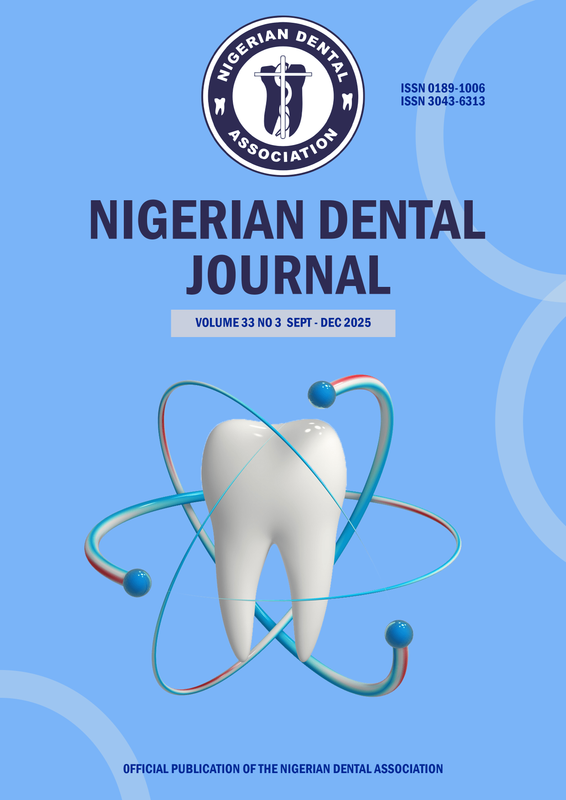Canal pattern in mesiobuccal root of maxillary molars of Nigerians
DOI:
https://doi.org/10.61172/ndj.v15i1.201Keywords:
Canal pattern, Mesiobuccal root, NigeriansAbstract
Objective: This in vitro study was carried out to investigate the variation (if any) in canal outline and number(s) in the mesiobuccal root (MBR) of maxillary first and second molar teeth of Nigerians, and its possible influences on the prognosis of root canal treatment.
Method: One hundred and three (103) and eighty seven (87) extracted, root-planed maxillary first and second molars respectively were sectioned transversely at three different points corresponding to the cemento-enamel junction, the peak of the external outline of the furcation and the margin of the middle and apical thirds of the mesiobuccal root. The root canals were identified using size 15 K-files and the canal number noted for each sectioned piece. The canal number(s) obtained at the three levels were projected to determine the canal types.
Result: Twenty- seven (26.2%) and 7(8%) of the MBR of maxillary 1st and 2nd molars showed double canals respectively at the chamber floor level. This figure increased to 44(42.7%) for the maxillary 1st molar at the cervical third of the root (p<0.05). The increase in the number of root canals below the chamber floor of the mesiobuccal root of the maxillary first molars, with the retained infected pulp tissue, could contribute to the failure of root canal treatments in such teeth.
Conclusion: There is 26.2% and 8% occurrence of double canals in the MBR of maxillary 1st and 2nd molars respectively in Nigerians. There is a need for a deliberate search for, and the obliteration of the additional MBR canals in clinical practice, using the improved techniques of biomechanical preparation.
Downloads
Downloads
Published
Issue
Section
License
Copyright (c) 2007 E. C. Otoh, M. C. Odika, A. O. Loto

This work is licensed under a Creative Commons Attribution 4.0 International License.
Open Access Statement
- We became fully Open Access since January 2023.
- Our new and archived materials are available free of charge on open basis and under a Creative Commons license as stated below.
Copyright statement
Copyright © 1999 The authors. This work, Nigerian Dental Journal by Nigerian Dental Association is licensed under Creative Commons Attribution 4.0 International License.

